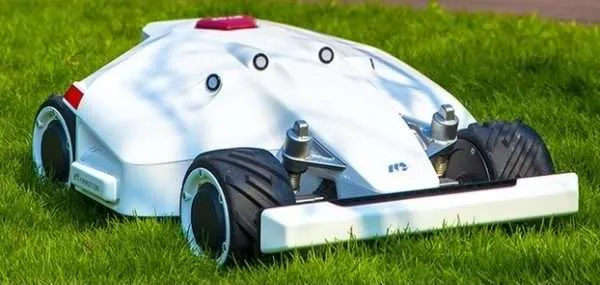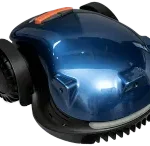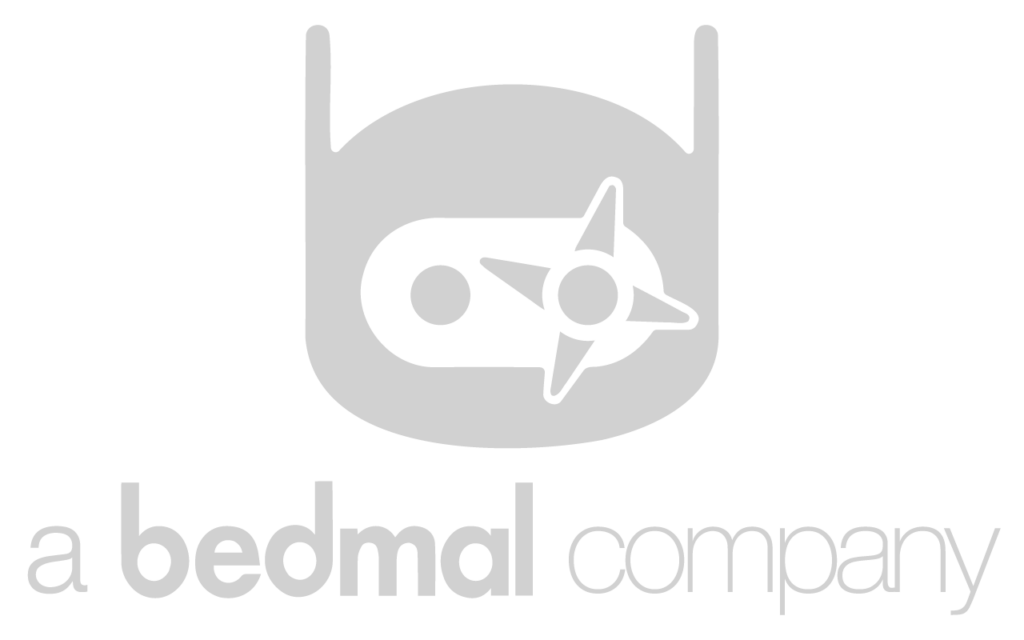Robot Lawn Mowers Without a Perimeter Wire (2023)
- Designer
- March 8, 2023


At the start of 2022, we published an article asking if 2022 was going to be the year when robot mowers without a perimeter wire became mainstream. Our conclusion was that it is likely that it will be a couple of years before the wireless mowers catch up with their flexibility of their wired cousins .
So 2022 has come & gone and although there were a lot of announcements, crowdfunding and soft-launches, wired robot mowers are still with us and mowers without a perimeter wire are still ‘bleeding-edge’.
With lots of new mowers coming to the market (this year or maybe next), we thought it would be a good idea to look at how to differentiate between them and whether they are right for you and your garden.
Is a wireless (GPS RTK) mower right for you?

The majority of mowers that don’t need a perimeter wire use an enhanced GPS system called Real-time kinematic positioning (or RTK as it is commonly known)…although they may use other terms to describe their systems.
RTK requires 2 GPS receivers to give it pinpoint accuracy – so it doesn’t mow through your flowerbed or end up in your pond.
If you read all the marketing hype, you would think that an RTK mower is the answer to all your problems, unfortunately that is not the case.
An RTK based solution is great for some gardens. If you look at a lot of the pictures where people have good results, they are open areas where the GPS signal to mower or RTK base will not be obscured, things to watch out for in your garden are:
- Gardens with trees where the canopy covers more than 15% of the garden.
- A house more than 5m tall
- Hedges over 2m tall
- Walls greater than 5m tall
- Narrow passages less than 3m wide
- Multiple lawns with small crossing areas
Also things outside your garden may affect it as well e.g. tall buildings which will shield the GPS signal.
Unfortunately, it is not black and white but if you have any of the above, maybe a wired solution is better for you.
It is also not just a question of putting an RTK mower down and pressing the button. The RTK base and potentially a separate aerial needs to be installed and then the mower needs to be taught where the edge of the lawn is…and you might have to do this more than once.
Unpacking the RTK mower box
To be able to compare mowers, you need to understand all the components that together make the mowing system work:
GPS receiver in mower
Robot Mowers have used GPS to optimise their cutting algorithms and to provide theft deterrence for a number of years.
The problem with GPS is the accuracy is limited by several factors such as atmospheric distortion and signal reflection which meant that it was only accurate to a few meters or if the signal was blocked by trees, buildings etc. , it might not be able to provide any position data at all.
To overcome these problems, RTK systems use a second receiver…
GPS receiver in base
A separate GPS receiver is used which must always have a signal i.e. clear line of sight to the satellites.
These are usually installed in the base station (where the mower charges) and may have a separate aerial which can be mounted in a position to avoid obstacles that could get in the way of the line of sight to the satellites e.g. on the roof of your house.
Base/ mower connection
The key to the RTK system is by using the data from both GPS receivers and comparing them, the mower works out where it is with pinpoint accuracy (a slight simplification but you get the idea).
In order to do this, there is a connection between the base and the mower to allow the base to transmit the GPS data to the mower (over radio waves). The power of the transmitter (and to a lesser extent the sensitivity of the receiver) govern how far the mower can be away from the base. In some systems this is limited to a couple of hundred meters and line of sight, others, many kilometres – allowing one transmitter base to service multiple installations in an area.
Want to know more? Have a look at the video.
Additional Odometry – when RTK stops working
“What???” I hear you say.
So as noted above, sometimes the mower may not be able to pinpoint its position for a short period as one of the GPS receivers is not receiving a signal. This could be due to atmospheric conditions or simply, in the case of the mower, the fact that it has gone underneath a tree and no longer has a ‘lock’ on the GPS satellites. So, what happens then? This is when other systems odometry systems built into the mower may help out.
Odometry is the use of data from other sensors to estimate the change in the mower’s position over time and hence work out where it is relative to where it last had a full GPS signal.
The simplest implementation may just let the mower run for x meters without a signal before stopping using wheel odometry (WO) to work out the distance. More complex implementations may use cameras, radar etc. to try and work out where the mower is or if there are any obstacles in its way.
The impact of the mower not knowing where it is for a small amount of time can be minor e.g. in the middle of the lawn or could be major e.g. as it heads towards a swimming pool!
The mower itself
Robot mower have been around for over 20 years. Over that time not only have the electronics and control systems evolved, but the reliability of the mowers and components have improved. This has been a learning process and with each iteration, a more reliable mower has been produced…that’s not to say there haven’t been hiccups along the way. A mower operates outside in all weathers and in a very uncontrolled environment (compared to a car driving along a made road) so there are always going to be issues.
When comparing mowers, consider the quality of the components that are being used, they aren’t all the same. It may not be easy to find the information but it is worth trying to find out e.g. have a look at this Husqvarna vs Ambrogio comparison.
As with cars, people tend to stick with the manufacturers as they have a history and have learnt the hard way, that’s not to say that a newcomer cannot disrupt the market with an innovative approach e.g. Tesla.
The quality of the mower itself is more important than whether it uses RTK or a wired system. At the end of the day, an RTK mower that keeps failing or produces a bad cut is much worse than a more reliable wires model.
The robot mower market landscape
There has been a proliferation of manufacturers announcing RTK models in 2022, some with a long pedigree of making robot mowers, others hoping people will invest in them so they can get into the market via crowdfunding.
The two manufacturers who have been making robot mowers for over 20 years are Ambrogio and Husqvarna, both have announced RTK models for domestic gardens (see below).
Below are some of the manufacturers, we have concentrated on those that cover areas up to 10,000m². Details are scant but over time we will fill them in as and when we find out…add a comment if you know extra info.
Ambrogio

Models: 4.36 RTK
Coverage: Up to 10,000 sq.m.
Available: May 2023
GPS: Base GPS will cover a large geographic area so you may not need to install one yourself.
Odometry: Not yet known
History: Has been making robot mowers for over 20 years. Has a number of other models which do not need a perimeter wire but don’t use RTK (Twenty ZR & L60)
Comments: The 4.36 is a great mower, if the RTK solution is as well put together as their other products, this will be a market leader.
Husqvarna

Models: Nera range
Coverage: Up to 5,000 sq.m.
Available: 2023 (no dates yet)
GPS: Base GPS will cover a 500m radius.
Odometry: Not yet known
History: Has been making robot mowers for over 20 years. Nera will use the EPOS system which has been used for commercial installations in wide open areas.
Comments: It will be interesting to see how this scales down to a residential setting.
Kress

Models: RTKn range
Coverage: Up to 5,000 sq.m.
Available: 2023 (no dates yet)
GPS: They state ‘at least one station (base) antenna for each lawn’ but also say ‘No ugly antennas in the middle of the lawn or on the roof of the house’
Odometry: Not yet known
History: Have been making garden machinery for over 60 years but more recently started making robot mowers.
Comments: I think it will be interesting to see how the look of this mower is judged by customers.
Mammotion

Models: Luba Range (all 4 WD)
Coverage: Up to 5,000 sq.m.
Available: 2023 – they have already shipped some but are now offering ‘pre-orders’.
GPS: 20,000 m² coverage sounds a lot but that equates to 80m from the base.
Odometry: Not yet known
History: Founded in 2022 with no history of mower manufacturing.
Comments: Initial feedback is good but some people have reported problems setting it up, problems with the App, some strange glitches with the software and the mower clogging with grass. Have a look at the facebook group for more information.
Segway
Models: Navimow
Coverage: Up to 3,000 sq.m.
Available: Big announcement in Feb 23 to say it was launched in the uk but seems to have gone quiet on availability.
Odometry: Uses Visionfence to identify potential issues. They have a useful checklist to see if your area is ok, this should work for any RTK mower.
History: New to robot mowers, they bought the Segway name.
Comments: Initial feedback was good but there are a number of reports the mower stopping working and worryingly people being offered incentives to not share negative experiences.
Others
Here are a few others who we previously identified but either don’t match our criteria or seem to have gone very quiet…if you know more then let us know!
Ecoflow

Ecoflow are better known for their portable powerstations but have launched the Blade mower . It is an unusual looking machine that offers sweeping as well as mowing up to 1600 m².
There is not a lot of feedback available on this machine although We have seen a number of reports that said that it was good in concept but released too early…will be interested to see how it goes.
LF Intelligence

Novabot was a crowdfunding project. It uses RTK & an HD camera and covers up to 2000 m². Although it claimed to have started shipping models in 2022, a recent post (July 2023) on their website was looking for Beta testers.
Eeve

Willow was one that caught our eye early on with its upright design. It is not an RTK mower but uses a camera rather than a perimeter wire.
Initial beta models had issues but they are currently allowing you to reserve a model for Aug/ Sept 2023 delivery. I’m sure there is a place for a machine based on this different approach.
Belrobotics

Bigmow & Parcmow do not quite fit into our target market as they are designed for larger lawns but are RTK machines.
For the last couple of years, they still needed a perimeter wire but adding RTK to the mower allowed the coverage to be increased three fold. Is 2023 the year when it will be totally wireless?
ArduMower

ArduMower is the solution if you would prefer to build something yourself.
You can buy the mower as a kit, customise it and add a GPS RTK board to it. All the bit are available from the Ardu Mower shop.
This is really for the enthusiast who likes building things and there is lots of info & people to help you.
They also list Alfred which looks like a fully built solution.
Conga

Conga from New Zealand is another crowdfunded startup.
This looks quite ‘retro’ compared to some of the other models but uses cameras to augment the RTK system so may prove to solve some of the problems that you encounter when trying to use RTK in a garden with fences, tree, building etc.
The website says ‘The Super Mower is coming soon’…although I think it has said that for a while.
Evovacs
The Goat was announced by Evovacs last year. Traditionally they make robot vacuum cleaners.
Although you can google it, if you go on the evovacs site and search for goat nothing comes up.

